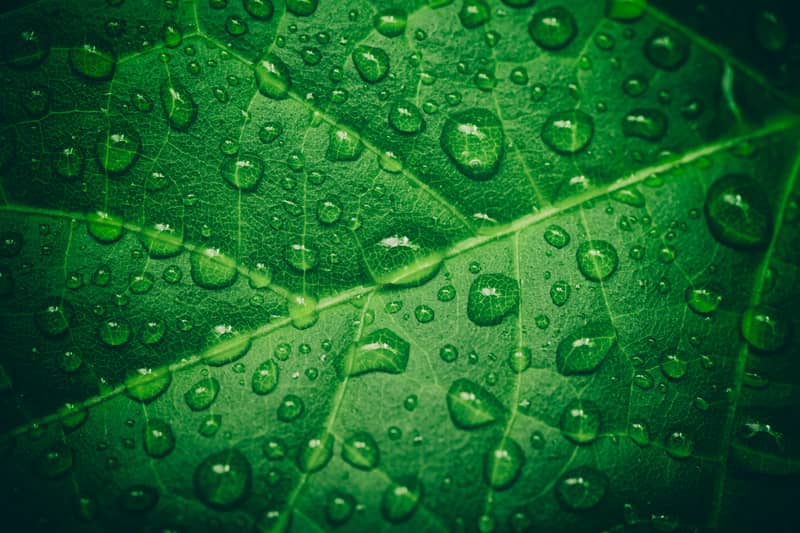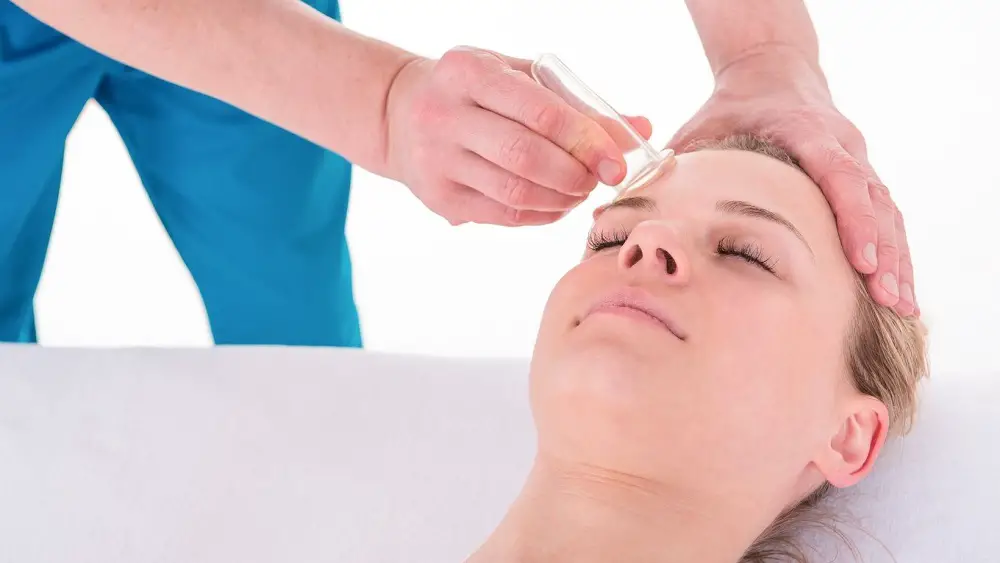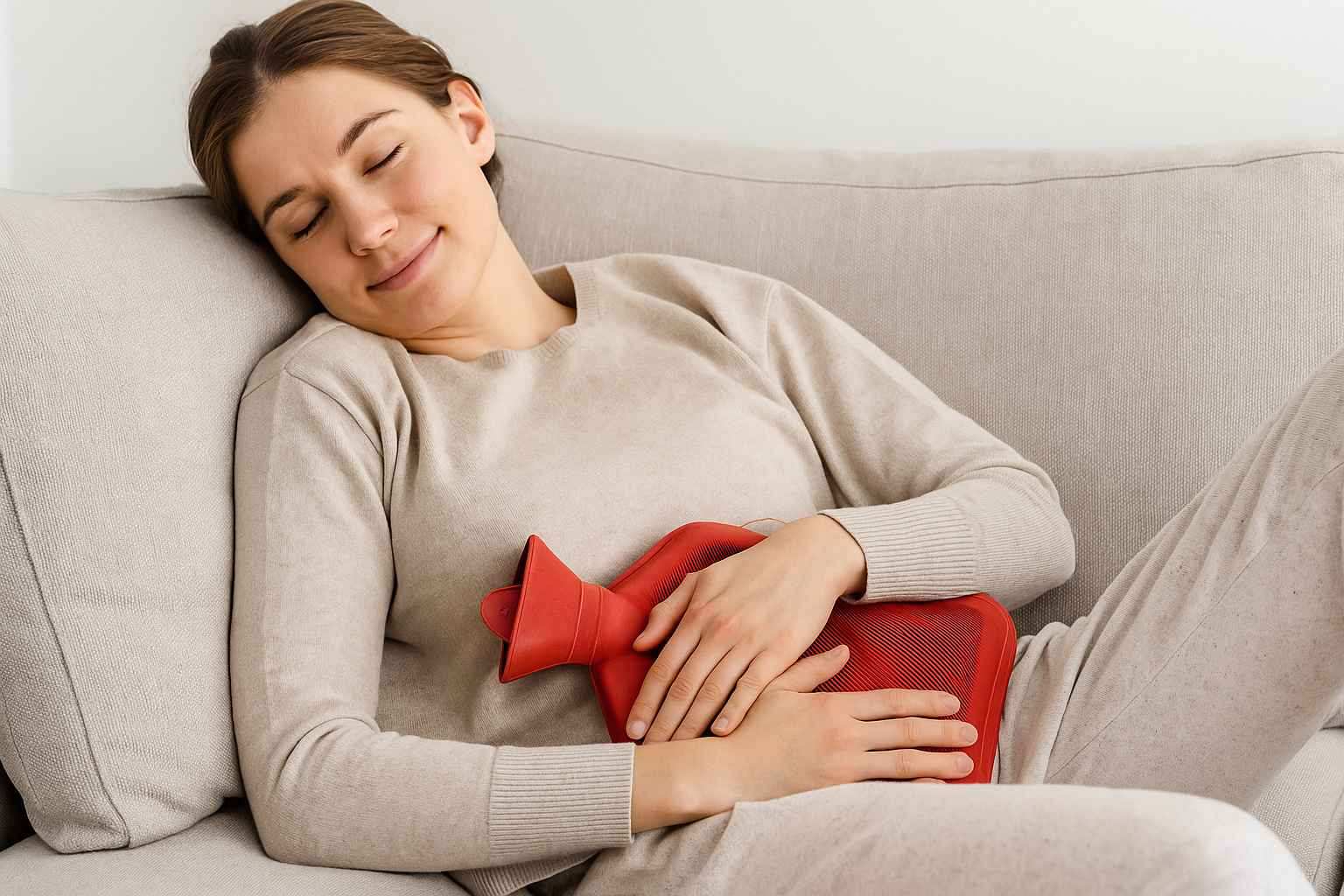Regardless of where you live and how old you are, dry skin can plague you. For me, dry skin has been an issue I faced every winter, and as I got older, it only seemed to get worse. I would go from having healthy skin to flaky skin in a matter of days, and it seemed as if no skin serum could help. Natural treatments are my favorite solution, so after years of failed topical remedies, I decided to start treating my dry skin from the inside out with acupressure points for dry skin.
After a few weeks of regular treatment, I was thrilled to see my skin health improve as all of the itchiness and dryness I had previously dealt with faded away. I know I am not alone, as many people across the globe will suffer from dry skin at some point in their lives. If you suffer from skin dryness, try this natural remedy, you won’t be disappointed.
Is Acupuncture Good For Your Skin?
The skin is an organ, and just as acupuncture helps treat complications or imbalances of the internal organs, it can also treat the skin. Acupuncture has been used to treat conditions of the skin for centuries, including everything from wrinkles to atopic dermatitis. This practice has been proven effective in reducing the intensity of skin disease-related symptoms, and it can also be used in conjunction with other treatments like topical or oral medications. If needles aren’t your thing or you want the benefits of acupuncture at home, you can also practice acupressure which is effective while still being gentle on the skin.
Does Acupuncture Help Dry Skin?
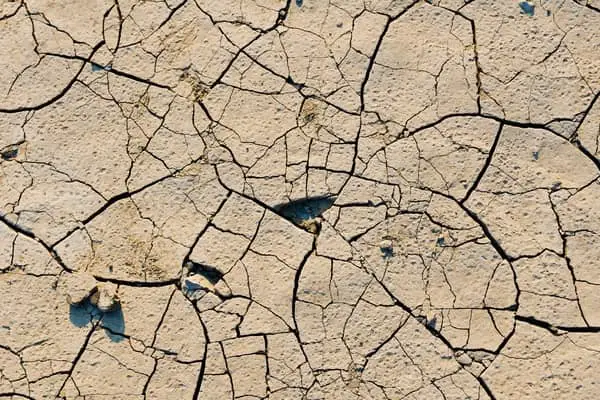
Acupuncture and acupressure can both help dry skin. If you activate the correct acupressure points for dry skin, it will help the body balance itself and improve natural functions like blood flow. These changes can improve the rate of healing, so your body can better tend to its dry skin.
Studies have also shown that acupuncture is effective for relieving symptoms like itchy skin, so you can feel more comfortable while you heal. Research even suggests that acupuncture is more effective at treating topical skin conditions than some classic medications, and it is safe to combine with most medications, making it a valuable treatment tool.
Acupoint: GB-1 (Other Names: Gallbladder-1/Tong Zi Liao/Pupil Crevice)
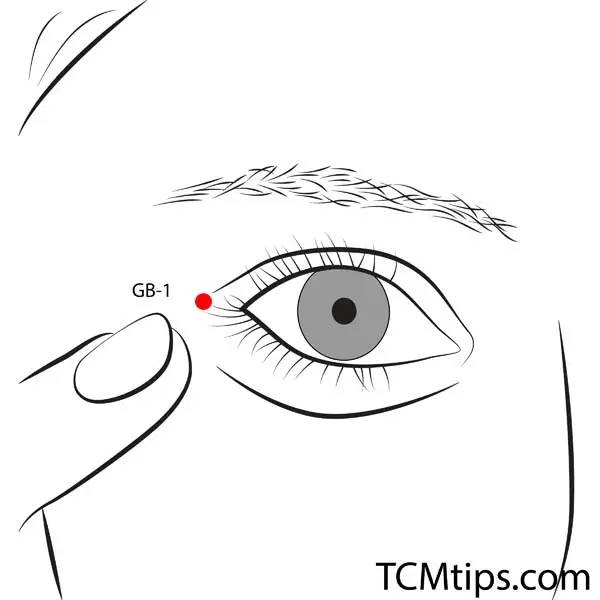
This gallbladder point is best known for its ability to relieve pressure or discomfort near the eyes, but it is also commonly used as a facial acupressure point for wrinkles. This is because this point works by improving blood and lymph flow. When these two internal fluids flow properly they remove waste from the skin and promote healing which results in healthy skin. This point is best for dry skin on or near the face.
You will find this point at the outer edge of either eye. Since the skin is sensitive here, you will want to apply gentle pressure with the pads of your fingertips, and you should press both at the same time.
Acupoint: LI-20 (Other Names: Large Intestine-20/Ying Xiang/Welcome Fragrance)
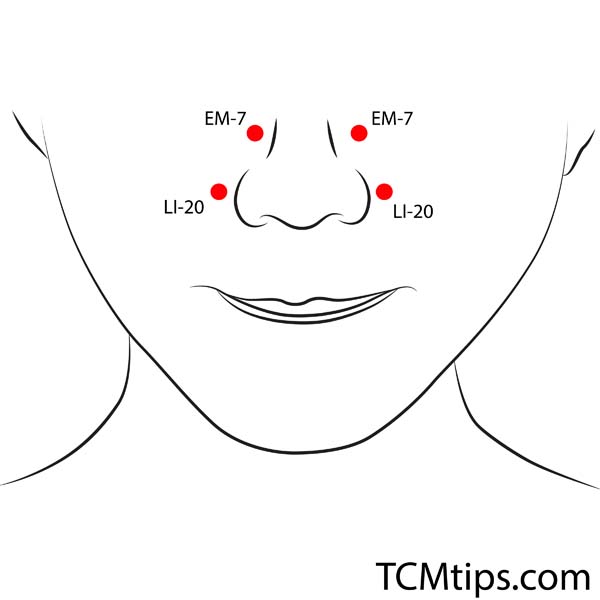
Dry skin regularly appears on the face, which is why this next acupressure point is also located on the face. LI-20 is known as one of the best acupressure points on the face for glowing skin, and that is because activating it results in a relaxation of muscles, a rise in skin temperature, and a subsequent increase in the natural skin secretions needed to maintain moisture.
To locate this point, start by scrunching your nose. This will define a line that starts at the outer edge of your nostril and leads downward. You will want to apply firm pressure, as if you are pushing towards the center of your head, right where the line meets the outer edge of each nostril.
Acupoint: ST-4 (Other Names: Stomach-4/Di Cang/Earth Granary)
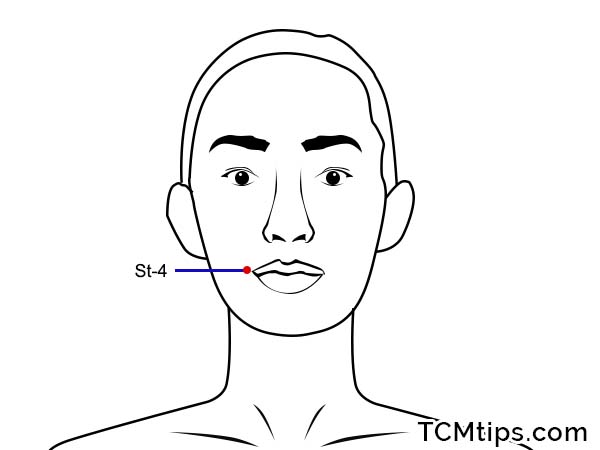
ST-4 is known for its influence over nerves in the face, making it an ideal acupressure point for facial paralysis. However, this also makes it a powerful point for stimulating the natural functions of the face to improve natural hydration and reduce skin dryness.
This point is mirrored on either side of the mouth. To find it, follow the corner of the mouth outward until your finger is in line with both your mouth and your pupil. Press here slowly, only using as much strength as you find comfortable. You will want to press both points at the same time in five-second intervals for 5 repetitions.
Acupoint: SP-3 (Other Names: Spleen-3/Tai Bai/Great White)
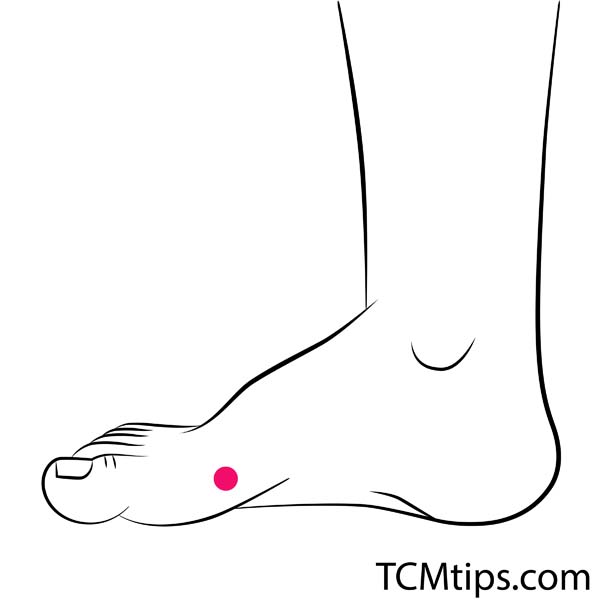
This next acupressure point is part of the spleen channel and is located in the foot. While this point is commonly included in acupressure points for ankle pain, it is an effective point for dry skin as well. Our bodies maintain balance through the proper circulation of Qi, blood, and water, so if any of these points are not flowing through the intestines properly, they will also be unable to flow through the skin. Stimulating the activity of these organs can bring more blood and water to the surface so it can maintain proper hydration and healthy skin.
SP-3 is located on the inner edge of the foot and is easiest to activate while sitting down. You will feel this point in the meaty depression behind the bony protrusion that is in line with the ball of your foot. In other words, this point is just slightly behind the metatarsal distal joint of the big toe.
Acupoint: ST-36 (Other Names: Stomach-36/Zu San Li/Leg Three Miles)
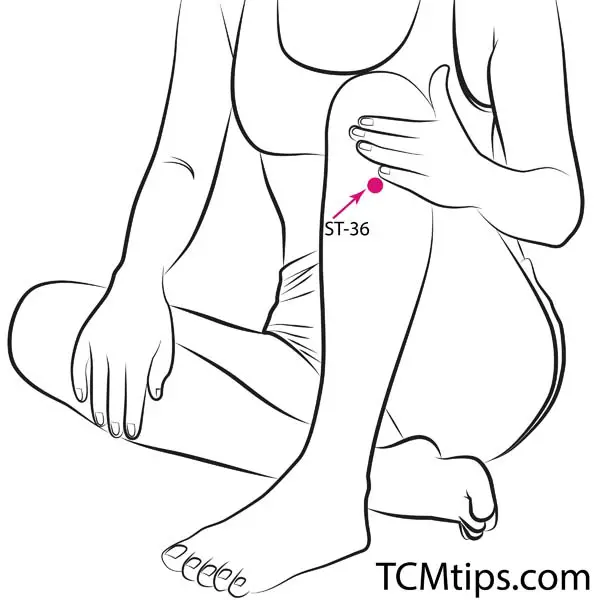
Much like SP-3, ST-36 also works to heal your dry skin by improving gastrointestinal function for better blood, water, and energy flow. This point is commonly used in nausea and headache acupressure points lists because of its direct connection to the intestinal tract.
This point falls about 3 cun below the base of the kneecap. This is equivalent to about four finger widths. Once you measure four finger widths down from the base of your kneecap, measure one finger width from the outer edge of the tibia, this is the shinbone. You should feel a fairly muscular area adjacent to the bone, where you will apply firm pressure for a few seconds at a time. 

Try our Anti-Aging Gua Sha Tool designed to bring out your skin’s natural glow.
Best Gua Sha Product- Anti-Aging: The tool is designed to target 11 specific aging signs such as wrinkles and sagging skin. By following the 7-step routine, users can improve skin firmness and reduce fine lines naturally.
- Enhances Skincare Routine: It works effectively with serums and lotions, boosting absorption and efficacy of skincare products.
- Visible Skin Improvement: Users can expect a smoother complexion, reduced puffiness, and a more youthful appearance.
 P. Sze
P. Sze 